Written specially for Vikalp Sangam
All photos – MKPC
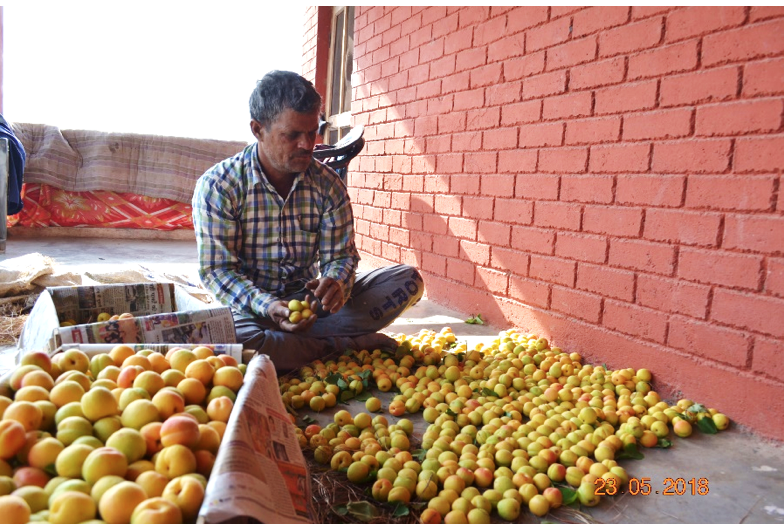
Packing and grading fruit at the MKPC centre – From idea to community-owned enterprise: the journey of the Mukteshwar Farmers’ Producer Company (MKPC)
While farmer producer organisations or FPOs have only begun to receive institutional and policy support over the last five years, a lot of the groundwork for the establishment of the Mukteshwar Farmers’ Producer Company (Mukteshwar Kisaan Producer Company – MKPC) had already been done by 2014.
By 2014, a number of women’s self-help groups had been federated to create micro-enterprises in dairy and animal husbandry, and seven new self-reliant cooperatives with over 700 farmers had been set up to engage in agri-marketing at a large scale. Facilitated by the Central Himalayan Rural Action Group, or CHIRAG as it is more widely known, these community-based institutions had slowly begun to take shape in a quest to provide alternative institutional models that protected Kumaoni farmers and their livelihood.
CHIRAG was the very first such organisation that established its roots in the Kumaun region of Uttarakhand, back in 1986. At the time, local communities were skeptical of the newcomers who had come in to their villages to inquire about their health practices. But over time, that distrust soon turned into a positive association. Today, nearly 33 years later, CHIRAG has established its place as an integrated development organisation working across the sectors of health, education, natural resource management and rural livelihoods.
The idea of setting up a Producer Company – or Farmers’ Producer Organisation (FPO) as is more commonly referred to in development sector parlance – emerged over time as CHIRAG realised the challenges of marketing without a business entity that could bring in the professionalism that was needed. It already had some experience in cooperative setup and development, having instituted two farmer cooperatives for agri-marketing in the 1990s. A producer’s company would also enable the increased participation of small-scale farmers as shareholders in the company and provide employment to local people as staff. It was hoped that CHIRAG could gradually withdraw and hand over the reins fully to MKPC after a transition period of 2 years following the registration.
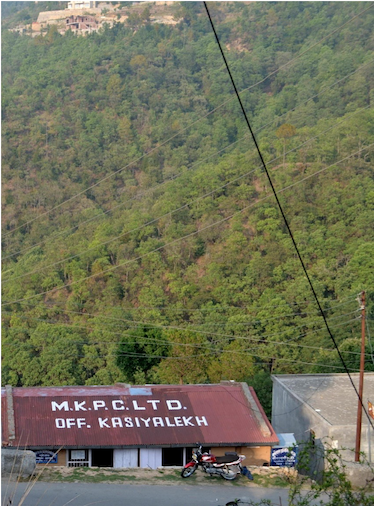
The MKPC office in Kasiyalekh
Today, MKPC may still be a fledgling organisation dealing with the expected challenges of being a ‘startup’ enterprise in a rural location, but it is testament to the potential of continued interventions successfully being handed over from an enabling organisation to the community. MKPC was formally registered as a Producer Company in 2015, and is now over 3 years old. Today, it has over 400+ shareholders and members, and is managed by a local team of 6, all from villages in Nainital district itself.
Economies of scale can benefit the farmer as opposed to the middleman
In its very first year, MKPC achieved a turnover of INR 5 lakhs and was able to offer its farmers rates that were 15-20% higher than the usual rates they would have gotten otherwise at the nearest agricultural produce market (mandi) at Haldwani.
A key stronghold of MKPC’s approach is marketing to established mandis such as Delhi and Haldwani, where economies of scale kick in once MKPC has been able to collect a minimum volume of that season’s fresh produce – whether it be vegetables like cauliflower, potato and peas, or fruits such as apples, pears, plums or peaches. In addition to just collection, MKPC also helps farmers get better rates through packing and grading. Such value addition practices, where fruits are sorted according to quality, can help get better rates on average. For instance, peaches that are larger in size and not damaged in anyway would be classified as ‘A’ grade, and fetch better rates than smaller or disfigured peaches. Proper packaging also ensures lesser damage in transit, and reduces the risk of lower or non-payment.
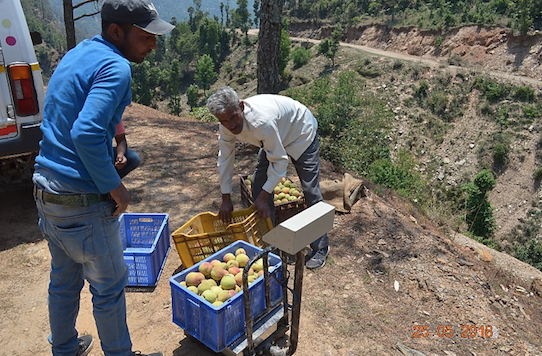
Weighing fruit before it is sent to the mandi
Today, 1 out of 5 farmers in 8 villages close to their primary centre are shareholders with MKPC. Increased volumes are also enabling MKPC to now explore newer markets, such as Lucknow and Agra. It isn’t just the traditional mandis – other local markets and festivals provide opportunity for retail prices as well. Over the past three years, MKPC has understood their target market at Lucknow’s Uttarayini Mela, for instance – and begins preparation a few months beforehand, preparing potato paapad and other products that they know sell well in Lucknow.
With a young team at its helm, MKPC is more than game to pilot new ideas and test their market. 25-year Harish says, “Even though Ramgarh is a fruit belt, there are villages and clusters north of us where fruits don’t grow in such volumes. We are now thinking of taking a small volume of fruit this season to areas like Bageshwar. This is good for everyone, as otherwise fruit from here goes all the way to Haldwani mandi, before it is sent back northwards to Bageshwar at higher rates. And it isn’t even fresh anymore when it reaches there after so many days.”
A diverse basket of agricultural produce and products
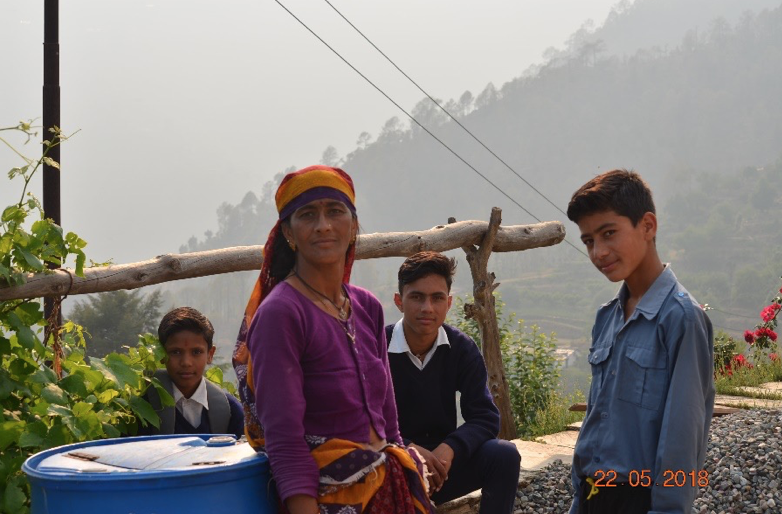
Local community members
But if only 20% of farmers from these villages are shareholders, each of them also market only about 20% of their entire produce through MKPC. The reasons for this are many, but a critical factor is the relationship of most farmers with aadhathis or moneylenders in their local mandis.
The relationships that these farmers have with their aadhathis have developed over generations. And despite the predatory nature of these moneylenders – interest rates can sometimes be upto 100% – households feel bound to them. Aadhathis can play the critical role of insurance during times of family emergencies or when money is tight.
Visions for the future
Even as people kept trickling in to inquire about going market rates and pick up spices such as dhaniya or haldi, the staff of the Mukteshwar Farmers’ Producer Company took out some time after lunch so we could sit out in the sun and literally bring out the drawing board. Taking out the time to sit back and reflect on your business is a luxury at most times, and everyone welcomed the opportunity to think about how their business model was continuing to emerge and take shape in the 2-3 years they had been there.
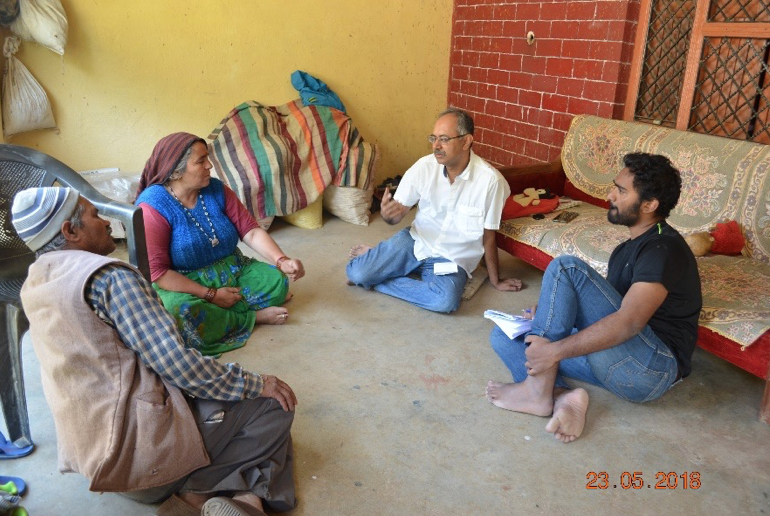
Meeting with MKPC members to learn more about the challenges they face
This gave me a chance to learn more about the vision behind their company. What had they set out to do? Almost immediately, the team spoke about their principal agenda – improving the livelihoods of local farmers, through the marketing of local produce that the region was known for.
In the long run, MKPC wishes to provide its shareholder and member farmers more and more opportunities for self-reliance in their production and marketing, while it will remain a platform for support and marketing linkages. They have already begun to provide pre-harvest support, through the sales of seeds and provision of agricultural equipment on rent. Post-harvest support such as packing, grading and marketing is already provided, but the team also wishes to eventually provide critical support services which can help farmers free themselves from the grip of moneylenders. They hope to be able to facilitate access to credit, through SHG loans as well as other means.
Today, MKPC may still have a long way to go in terms of achieving its vision. However, it is already providing a critical alternative to farmers who otherwise have little agency in their primary livelihood – agriculture.
Contact the author